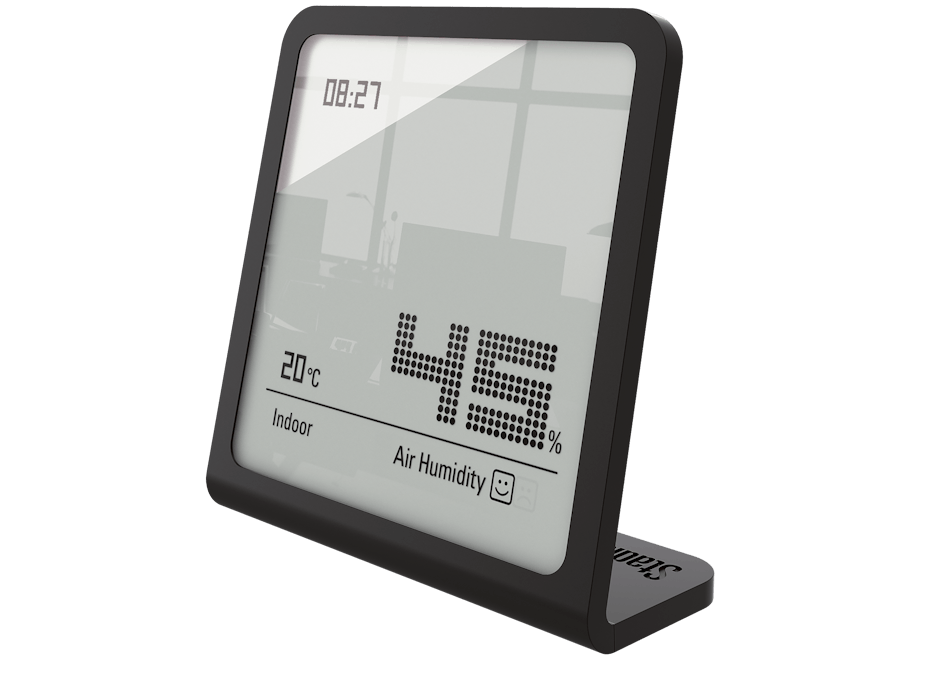Measure humidity
To create the optimal indoor climate, it is important to measure the current humidity. Is the relative humidity too high or too low? On our page, you can find out more about why measuring humidity is important, which values are ideal and how you can measure the relative humidity.
Measure humidity correctly
Humidity is measured correctly using a hygrometer. This continuously monitors the room climate so that you can react early if the humidity is too high or too low over a longer period of time.
There are different types of hygrometers. A basic distinction is made between analogue and digital hygrometers. In addition to the temperature, the hygrometers from Stadler Form also display a smiley face that confirms with a smile when the humidity is within the recommended range.
Key figures
Good and bad humidity values


Air humidity
Why is it important to measure humidity?
Humidity has a significant impact on our health and well-being. Excessive indoor humidity can promote mould growth and allergic reactions, while low humidity can lead to dry mucous membranes and irritated eyes, among other things. Humidity also affects the durability of materials in buildings and can impair the efficiency of heating and cooling systems. At home, in public buildings or in industry, the right humidity plays a decisive role in comfort and functionality - so you should measure the humidity on an ongoing basis.
What to do in the event of unfavourable values
In summer, when the outside air is warm and it rains frequently, the indoor air is typically humid. Rooms that are poorly ventilated or colder, such as cellars, hobby rooms, screeds, etc., typically have excess humidity. If the humidity is too high, regular ventilation helps to reduce excess moisture in the room air. If humidity levels are constantly above 60 %, further measures should be taken to prevent mould growth. In this case, dehumidifiers can help to effectively reduce humidity.
More about dehumidifying the air
Particularly in autumn and winter, when rooms are heated, the indoor air typically becomes too dry. If the humidity is too low, the room should be aired regularly to ensure a healthy indoor climate. Humidifiers offer an ideal solution for sustainably increasing the humidity to an ideal level.
More about humidifying the air






















